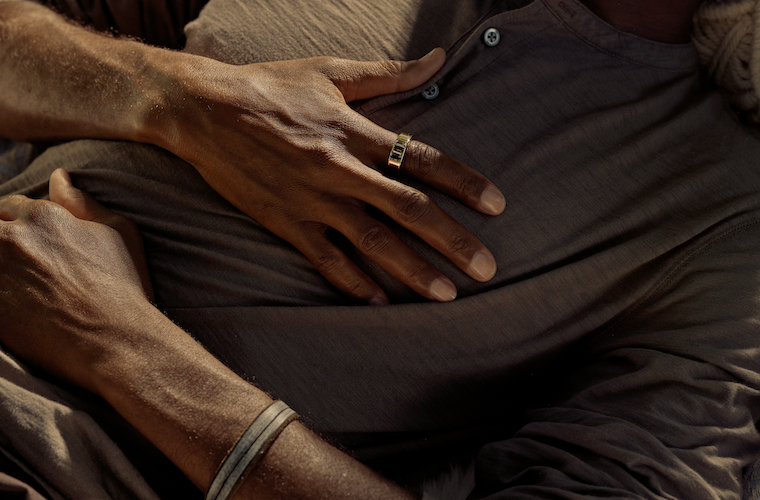Every now and again, it’s normal to wake up feeling less than refreshed. But if you feel excessively tired every day, it could signal an underlying condition that’s affecting your sleep quality.
One that could be to blame: sleep apnea, which causes you to stop and start breathing as you sleep. This wakes you up (though you may not remember being awake) and prevents you from cycling through the all-important sleep stages.
Sleep apnea is extremely common. About 30 million Americans — and nearly 1 billion adults globally — are believed to have sleep apnea. Even more shocking: About 80% of moderate and severe cases of obstructive sleep apnea go undiagnosed, according to the American Sleep Apnea Association. Unfortunately, it can also lead to serious complications, including heart disease, diabetes, and depression, if left unchecked.
The good news: There are ways to treat sleep apnea if you are diagnosed. Read on to learn more about the signs, causes, and potential treatments for sleep apnea.
Sleep Apnea, Defined
There are a few types of sleep apnea, but obstructive sleep apnea (OSA) is by far the most common, says Philip Alapat, MD, sleep expert and assistant professor at Baylor College of Medicine.
As you sleep, some of the mechanisms that work to keep the back of your throat (your upper airway) open when you’re awake freeze while you’re asleep. For people with OSA, inhaling can generate negative pressure which encourages your upper airway to collapse while sleeping, and then air can’t pass through it. This causes your breathing to stop and start again periodically.
Another less common form is central sleep apnea, in which you stop breathing because your brain doesn’t send the correct (or any) signals — “as if it had ‘forgotten to breathe,’” explains Julio J. Fernandez-Mendoza, Ph.D., clinical psychologist and associate professor of sleep medicine at Pennsylvania State University. Some people may have both central and obstructive sleep apnea.
Regardless of which type of sleep apnea someone has, when they stop breathing, even just for a moment, they wake up slightly so their brain is pulled to a lighter stage of sleep. This prevents them from staying in the deeper, most restful stages of sleep that your brain and systems need to fully recover and repair. (Learn more about sleep stages here.)
Symptoms of Sleep Apnea
Loud snoring and gasping for air are two of the main symptoms commonly experienced by people with obstructive sleep apnea. That said, snoring is fairly common and doesn’t necessarily mean you have sleep apnea, Alapat points out. (If you have a partner who sleeps in the bed with you, they may notice if either of these events occur during the night.)
Additional symptoms of sleep apnea include:
- Poor sleep quality
- Waking up often throughout the night
- Someone telling you that you stopped breathing during sleep
- Waking up with a dry mouth
- Feeling excessive tired during the day
- Morning headache
- Irritability
In the long term, if left untreated, sleep apnea can lead to additional complications and increase your risk for major diseases, including heart disease, high blood pressure, stroke, depression, and diabetes. Plus, the excessive daytime fatigue could put you at risk of accidents, due to falling asleep at work or even behind the wheel while driving.
Finally, sleep apnea can be a concern if you’re having major surgery, due to complications with sedative medications and general anesthesia. If you have OSA or symptoms related to the condition, be sure to talk to your doctor before having surgery.
Causes of Sleep Apnea
Anyone can develop sleep apnea at any age, though certain factors can increase your risk.
Obesity is the number-one risk factor for sleep apnea, Fernandez-Mendoza says. Beyond meeting the standard BMI (body mass index) criteria for obesity, research shows that even among clinically overweight people, belly fat is highly associated with the condition. “That’s important because before one is clinically obese, they can use exercise, an improved diet, and sufficient sleep to try and prevent the more severe sleep apnea that can come with obesity.”
After obesity, risk depends on age. In general, among people younger than 50, men are significantly more likely to have OSA compared to women. But after menopause, as women’s hormones shift, their sleep apnea risk increases, according to Fernandez-Mendoza.
Other factors that increase your risk for sleep apnea include:
- Heart disorders, including abnormal heart rhythms like atrial fibrillation
- Type 2 diabetes
- Depression
- Smoking
How to Treat Sleep Apnea
The gold standard for OSA therapy, and the most common treatment, is a CPAP (continuous positive airway pressure) machine. This device requires you to wear a mask while you sleep, which delivers a steady stream of pressurized, oxygenated air. It keeps your airways from collapsing and allows you to keep breathing continuously throughout the night.
The mask and tubes are attached to the machine’s box, and it usually takes time to find a comfortable mask, so it may not be the most convenient of fixes — but it usually helps people with significant to severe sleep apnea, both experts point out.
More mild, less severe OSA can be treated by:
- Oral appliances
- Hypoglossal or vagal nerve stimulation, though these requires surgical implantation of a small device and electrodes
- Surgery to remove the swollen tonsils or adenoids in children
Other actions that can help improve sleep apnea:
- Learning to sleep on your side instead of your back
- Weight loss
What To Do If You Think You Have Sleep Apnea
Because it’s difficult to know if your breathing is stopping throughout the night (unless your partner notices), your best initial marker for whether you might have sleep apnea is if you’re experiencing any of sleep apnea’s symptoms regularly, particularly if you have one or more risk factors.
Health trackers that accurately record oxygen levels, like the Oura Ring, could also be of some benefit in suggesting the prevalence of obstructive sleep apnea, both experts agree. But wearables and symptoms both can’t provide a diagnosis.
To determine if your symptoms are indeed sleep apnea, talk to your primary care physician, who will likely refer you to a sleep disorder clinic. There, sleep specialists will put you through a series of tests, often while you sleep, to measure your heart rate, blood oxygen levels, airflow, breathing patterns, and sometimes brain activity.
The Oura Ring is not a medical device and is not intended to diagnose, treat, cure, monitor, or prevent medical conditions or illnesses.










